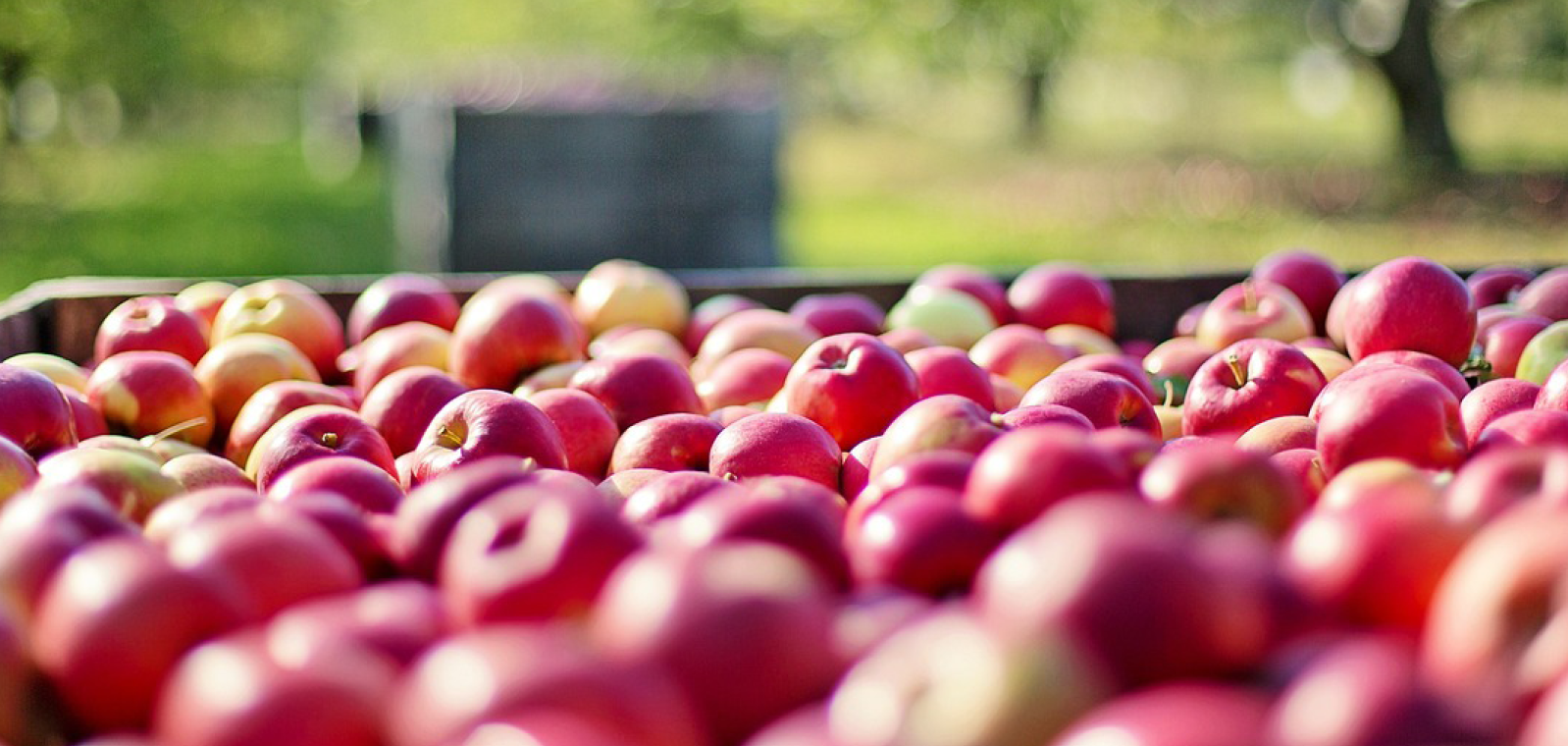
Apple season is upon us and once again, Michigan and Wisconsin growers have a bountiful crop to share.
While not as plentiful in Michigan as last year’s record-breaking year, it is sizing up to challenge that benchmark. That’s in sharp contrast to 2012, when 90% of Michigan’s apple crop was lost because of 80-degree days in March followed by some freezing April nights.
Drought has dented the crop yield and size of fruit in some Wisconsin orchards, especially for those without irrigation. The U.S. Drought Montor reported extreme and exceptional drought covering much of southwestern Wisconsin, far northwestern region and in the south-central region, calling for constant irrigation where available.
USDA does not single out Wisconsin apple production, but in Michigan, the national agency put Michigan’s forecast at 27.4-million-bushel crop (42-pound bushels), a 15% drop from last year’s record crop of 32.38 million bushels. However, U.S. Apple Association (USApple), a nonprofit representing the entire apple industry, set its forecast almost 17% higher, at 32 million bushels – 24% higher than the 2019–21 annual average.
Across the states, the 2023-24 apple crop is expected to top 256 million, according USApple, which is about 6 million bushels over the USDA's annual forecast.
The USDA released its report on Aug. 11 and USApple followed a week later at the organization’s annual Outlook Conference in Chicago.
Only Washington and New York produce more apples than Michigan, which exports to Central and South America, the Caribbean and Asia. However, the majority of Michigan’s apple crop is sold domestically in about 32 states.
Abundant fruit, excellent quality
Despite a hot and dry Michigan spring, USDA commented that, “there were no widespread spring frost damage events, and July precipitation enhanced fruit sizing.”
Travis Bratschi, GreenStone vice president of agribusiness lending out of Traverse City and an apple and tart cherry grower in Williamsburg, says the season is shaping up nicely and growers are optimistic. “Fruit quality is exceptional… some of the best quality I’ve seen since I’ve been a grower and customers are agreeing,” he adds.
Washington is the country’s number one producer of apples, accounting for almost two-thirds of U.S. production. According to USDA, Washington is forecast to produce 160 million bushels, a 9.1% increase from 2022-23, but 2% lower than the five-year average. It’s a much-improved forecast from last season’s production of 146.19 million bushels, which came after a cold spring and snow that affected pollination during bloom.
“In Michigan, there is some concern with pricing on the fresh side because Washington has a big crop and that always has an impact on pricing,” Bratschi says.
There’s also a pinch on the processing side, as prices are down from years past. “With a large crop and last year’s less-than-stellar pack out (fresh) creating an excess of ‘sort outs’ (apples going to processing), it has created some inventory,” Bratschi says. “The processing market is pretty full, which will be reflected in pricing. There will be apples in Michigan that don’t get harvested because there is no home for them.”
He predicts that some growers may take out some of their golden delicious that used to sell into the fresh market. “I expect growers to analyze what they are growing, what makes money and if something is not, they will convert to a different variety,” he adds.
About 75% of Michigan’s commercial apple crop is grown on the west side of the state in an area along the lakeshore north of Grand Rapids, known as the Fruit Ridge. Many apples are also grown to the north of the Fruit Ridge and all the way up into Northwest Michigan, as well as areas in southwest and southeast Michigan.
Hard cider trend
Finding new and expanding markets is one of the top focuses of the Michigan Apple Committee. “One important trend is hard cider, which continues to boost the Michigan Apple industry,” says Diane Smith, MAC executive director. “There are so many great ciders for people to try!”
Another trend are new apple variety releases in the marketplace. “We get asked a lot about new varieties, and managed varieties, but there are challenges that go with that,” Smith says. “Stores don’t have enough room for all of them and too many varieties can sometimes confuse consumers.”
Labor challenges
U.S. apple growers are concerned with increasing costs in all areas of production. Most recently, regulatory changes to agricultural labor have put an increased burden on growers, Smith says. Most growers utilize the H2A program to hire farm workers. “Nationally, the Adverse Effect Wage Rate (AEWR) in H2A ranges from $13.67 to $17.51,” she says. “In apple country that range is $14.91 to $17.51 and nearly 90% of apples are grown in states where the AEWR is between $16.55 and $18.65.”
Even growers who do not use H2A will be impacted, she adds, because to stay competitive in the employment and retention of workers, non-H-2A growers will also have to increase wage rates.
In Michigan, there are more than 14.9 million apple trees in commercial production, covering 34,500 acres on 775 family-run farms.
Wisconsin Apple Growers Association represents 170 commercial apple growers from across the state.
Commercial orchards are found in 46 of Wisconsin's 72 counties, comprising about 7,400 acres and producing about 56 million pounds of fruit worth over $9 million per year.
Apples are grown in all 50 states and over 2,500 varieties are grown nationwide.
“We are blessed to have another good apple crop,” Bratschi says. “It’s good for growers, consumers and Michigan, as an apple-producing state.”
- Gala — 18.1%
- Red Delicious — 12.5%
- Honeycrisp — 11.1%
- Others — 10.1%
- Fuji — 10.1%
- Granny Smith — 9.9%
- Golden Delicious — 6.3%
- Pink Lady/Cripps Pink — 4.9%
- Cosmic Crisp — 3.8%
- Rome — 2.8%
- McIntosh — 2.1%


